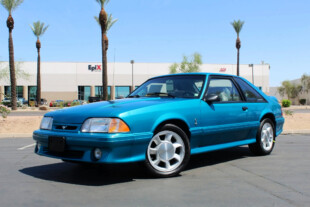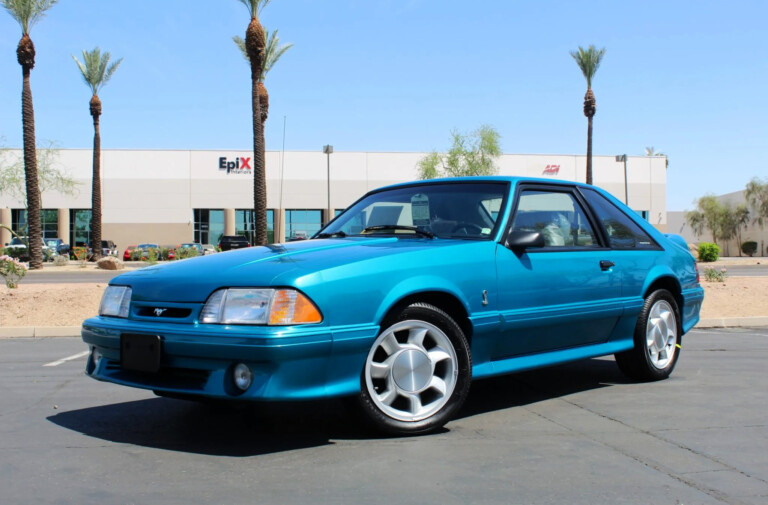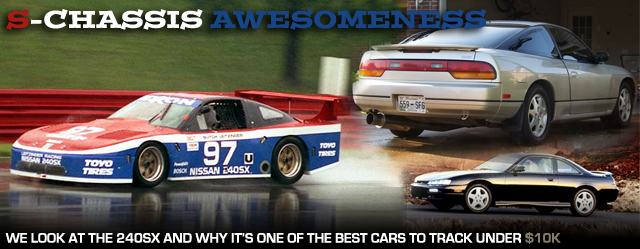 The Nissan 240SX is an extremely popular project car platform. It is a front-engined, rear-wheel-drive, naturally-aspirated four-cylinder car that can be purchased for just a couple grand nowadays. While both models, S13 and S14, are really popular in the drift world, they are also quite popular in the autocross/HPDE world.
The Nissan 240SX is an extremely popular project car platform. It is a front-engined, rear-wheel-drive, naturally-aspirated four-cylinder car that can be purchased for just a couple grand nowadays. While both models, S13 and S14, are really popular in the drift world, they are also quite popular in the autocross/HPDE world.
Due to their front-engine, RWD configuration, they’ve become some of the most popular cars on the market today. The fact that they’re so easy to swap virtually any kind of engine into makes them appealing as project cars, but not everybody has the funding for a full-blown track monster. The S13 and S14 generations also have a great deal of aftermarket support with parts coming from budget-minded and big name brands that pride themselves on performance and racing.
Follow us into the grip-oriented world of the 240SX as we go over the history of the car, some great beginner modifications, and some cool series/HPDE events to track them in.
A little history lesson on the 240SX
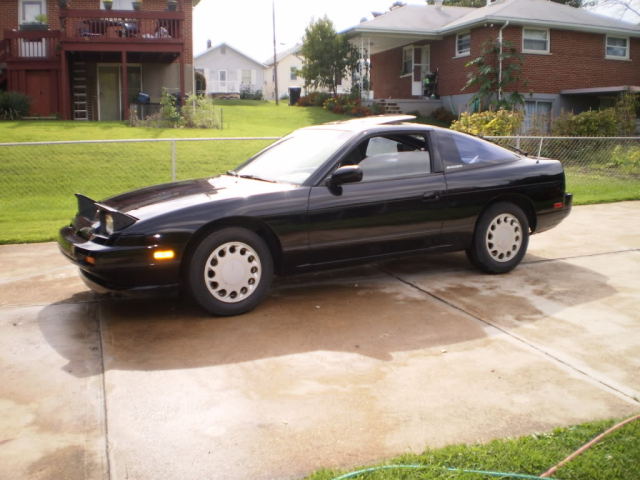
Image Source: galleryhip.com
The 240SX (S-Chassis platform) was introduced by Nissan in 1988 to come on to the market as a 1989. It replaced the outgoing 200SX (S12). From 1989 to 1990 the car came with the single-cam KA24E engine, but from 1991 to 1999 the car came with the dual-cam KA24DE. The two generations, S13 and S14, can easily be distinguished by the differentiation in body styles, naturally, because the S14 only came in a coupe model. The S13 came in a coupe, fastback, and a convertible model, but the most desirable model for HPDE/autocross events is either the S13 coupe, fastback, or S14 coupe.
The engines that come in the 240SX are actually pretty good platforms to start out with – some people even build the factory engine instead of opting to swap it for an SR20DET – a popular DOHC, turbocharged engine sold in the Japanese market only. The KA24E made 140 hp and 152 lb-ft of torque from the factory, while the KA24DE made 155 hp and 160 lb-ft. A lot of people underestimate the KA24 engines because they don’t come stock with much power.
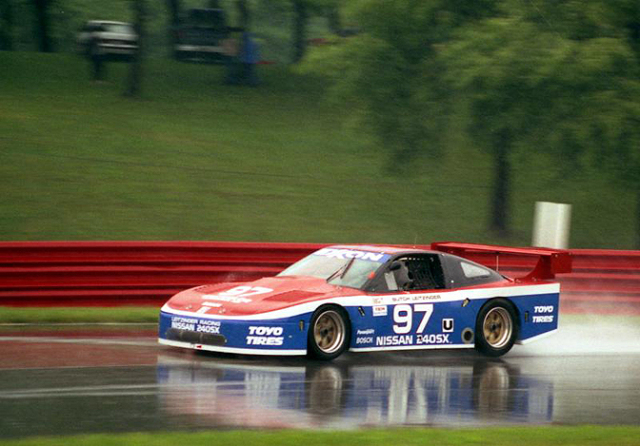
Image Source: Mark Windecker
From 1990 to 1993, Nissan 240SX S13s were campaigned in the IMSA series. For the duration of the program, the main factory team was Leitzinger Racing which was a family-run operation headed by Bob Leitzinger. In 1991, the cars were embellished with more familiar racing colors and outfitted with more aggressive aerodynamic bodywork. The updated bodywork must’ve worked out in their favor unbelievably well because Nissan took home the IMSA GTU title with Leitzinger Racing. They went on to take the title every year up until ’93 as well.
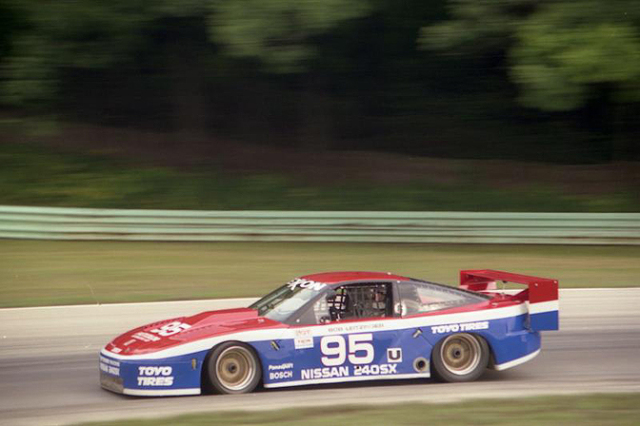
Image Source: Mark Windecker
In 1992, the car’s bodywork had changed again, and this time, it was much wider than the 1991 season. With Leitzinger’s son, Butch, at the wheel, the team locked out the top three spots in the driver’s championship in the 1992 season. In the 1993 season, Leitzinger Jr. went on to win the IMSA GTU Championship, marking the first milestone of his racing career. The earlier chassis ended up in the hands of privateers, but there are no sign of them today.
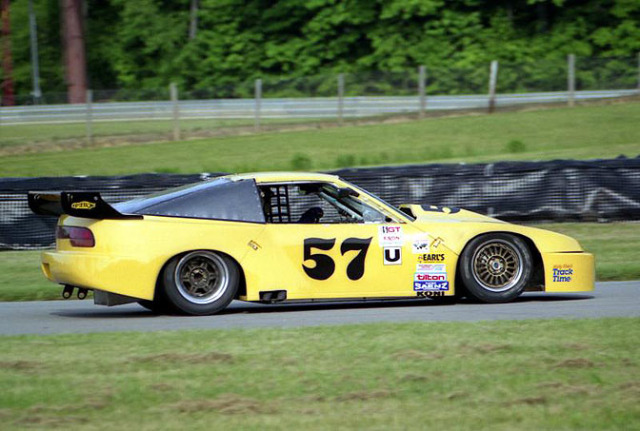
This is one of the chassis’ that ended up in the hands of a privateer racer after it had been taken out of commission. Image Source: Mark Windecker
What to look for when purchasing
In terms of reliability, the s-chassis is a solid car. There are a lot of modified 240SXs on the market, but finding an un-tweaked example can be difficult. When you do come across a completely stock one, the price is usually higher than one with some modifications. When looking for a 240SX, apply the basic rules of buying a car; confirm that the chassis is straight and that the standard maintenance areas have been assessed.
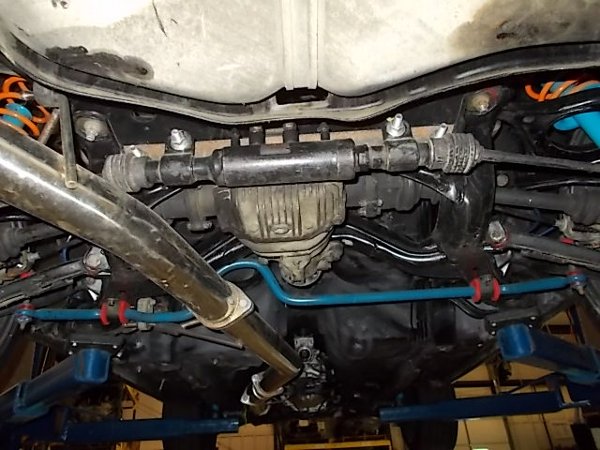
Here’s what the underside of the car would look like if it came with the HICAS system. Image Source: JGY Customs
One thing you really want to check for when purchasing an S-chassis car is the HICAS or Super HICAS system. The HICAS (High Capacity Actively Controlled Steering) system is Nissan’s four-wheel-steering system that can be found on some 240SXs. The system was introduced in 1986 on the Skyline GT-S coupe and later made its way to the 240SX in limited numbers. Early HICAS systems used hydraulics to steer the rear wheels. That hydraulic system is powered by the power steering pump and steering direction is handled by speed sensors. Later versions, called Super HICAS, employ an electric actuator which cut the weight of the system down.
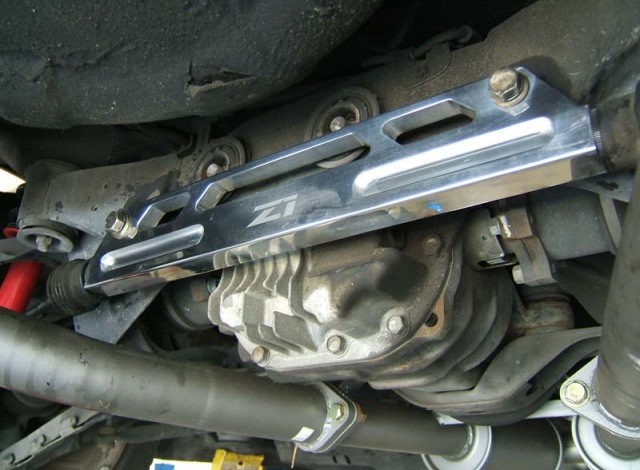
Image Source: Z1 Motorsports
Being that there are no given production numbers of 240SXs with the HICAS system, it would be good to check the underside just to be sure if the car comes equipped with the system or not. We do know that the system only came on some of the S13 hatchback cars from 1991-1993, though. Should you not want the HICAS system upon purchasing a 240SX with it, there are quite a few HICAS delete kits on the market that are really easy to bolt in.
Some easy, cost-effective beginner modifications
Some great beginner modifications for the S13/14 chassis are, a good set of high performance street tires. It is often wise to learn the dynamics of a car on street tires before jumping to an R-compound where the limits, and therefore speeds, are higher. Lowering springs, with new struts and shocks, is another great modification that will help a lot on the track. Coilovers are an option to,o if you want to further adjust your suspension, but you will end up spending a little bit more than with a set of performance shocks and springs.
We talked to Nick Hunter of 5523 Motorsports in Escondido, California and he had some great advice for novice track day enthusiasts. “Bang for the buck, I think that being able to get the car to handle properly, being able to lower it a little bit without throwing all the geometry out the window, and being able to make it stop really well — those things right there will make it a better car to drive, a more fun car to drive, but more importantly, as a driver, it will force you to develop your skills.”
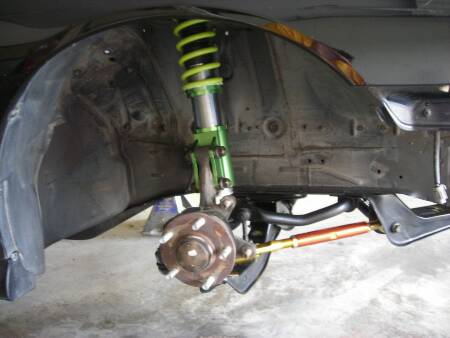
Image Source: LS1Tech.com
To bring the tires and suspension modifications to fruition, an alignment is key. “A proper alignment is so misunderstood and so often over looked,” said Hunter. “Over-lowering is a huge problem, especially on a car that has limited suspension travel to begin with.” To add to that, it would also be a good idea to upgrade the sway bars, control arms, and replace any worn or cracked bushings with new ones before getting the car aligned.
With autocross/HPDE events, it’s not about having the most horsepower, but having a great handling car that can keep momentum up in the corners and learning the car’s limits. Adding power modifications too soon can hurt your learning process despite what it does for your lap times. Learning the car’s limits and how it reacts at those limits is pivotal to becoming a great driver.
Hunter also made a great point that really put track days in perspective for us – hopefully it will put how serious tracking cars are in perspective for you too. “The single biggest modification that you have to make is not to the car, but to the loose nut behind the wheel.” Track days are serious business and could result in serious injury or death, if not careful. We’re not saying to go out and fully cage your car, but to invest in a nice Snell-certified racing helmet as well as a fire-retardant race suit.
We also talked to Will Wattanawongkiri of Will Wattanawongkiri Racing, who has had much success racing his S13 hatch in the Global Time Attack series, as well as the Redline Time Attack series, what his first mods would be and this is what he told us:
1. Wheels/Tires (Street performance tires such as Hankook RS-3 or similar-grade tires)
2. Good brake pads and rotors. Braking is one of the most important things in racing. Most professional race car drivers are still learning how to brake each time they get out on track. If you are comfortable with braking, then you will be able to learn quicker.
A. If they want to invest a little more on brakes, they can upgrade to Nissan 300zx caliper and rotors. These are four-piston front and two-piston rear brake systems that cost a lot less than going with an aftermarket big brake kit.
3. Suspension components include strut bars, struts and shocks, springs, and sway bars.
4. Easy power mods for naturally-aspirated cars include intake, exhaust, a test pipe or high-flow catalytic converter, and a header.
5. Easy aerodynamic mods would be to get a rear wing and build your own front splitter.
Remember, being the fastest around the track is cool, but the main objective of track days is to learn; and most of all, have fun while doing so.
Taking it to the track
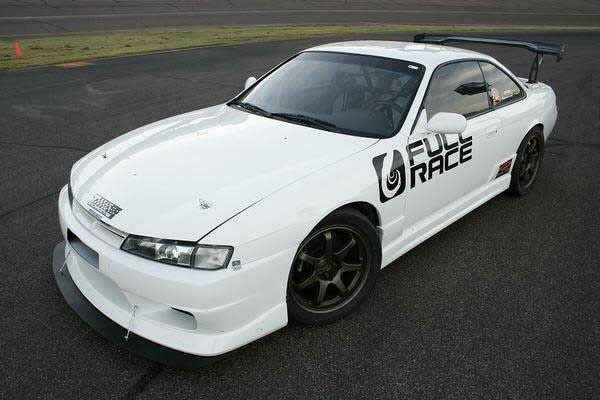
Image Source: Nicoclub.com
Generally speaking, there aren’t any one-make-only classes for 240SXs to race in like there are for Miatas, but you can race one in SCCA’s Solo class along with plenty of other club venues. You might want to check out some forums pertaining to your area because some hold track days periodically and they’re usually open to all makes and models.
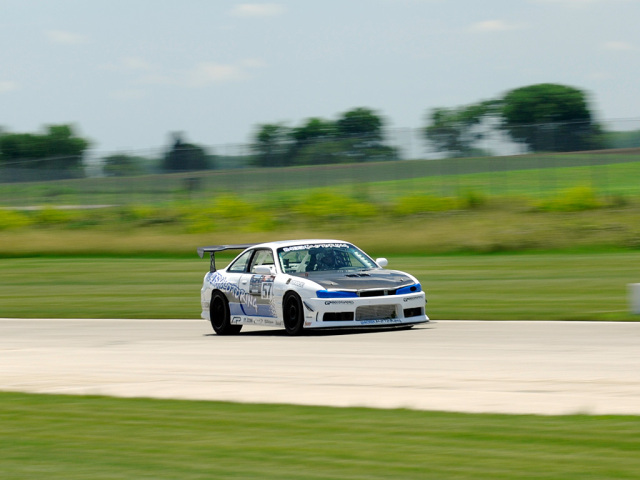
An S14 built for the Redline Time Attack series getting some track time in. Image Source: {http://zilvia.net/}Zilvia.net{/link}
Also, if you’re so inclined, and have a pretty disposable income, SCCA’s Production class is a great option as well. The Production class consists of series produced cars that are allowed a range of performance modifications while retaining their original design, structure, and drive layout. The three performance potential-based classes include: E Production (EP), F Production (FP) and H Production (HP). EP is the fastest of the Production classes with HP running the slowest in the category. For those that want to go all out on a 240SX build, there’s also the Redline Time Attack series and Global Time Attack series.
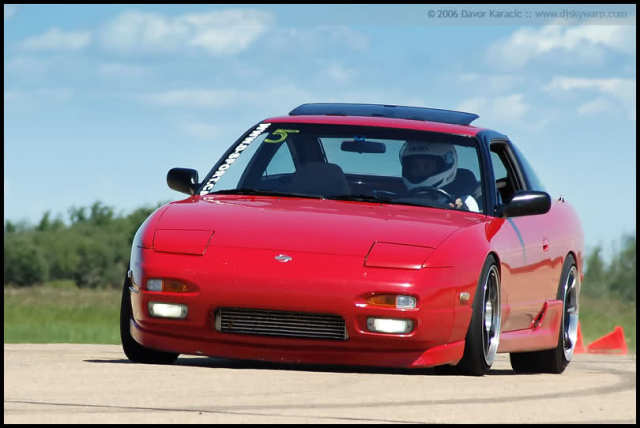
Image Source: Nicoclub.com
Overall, S13s and S14s are great beginner track cars and are pretty solid for the money. There are more companies than we can think of that produce parts every kind of performance part imaginable for this car and there are many knowledgable shops that can help you get the car to where you want it to be. Also remember that 240SXs aren’t only good for building a drift car, they can be successfully road raced with the addition of the proper components.



